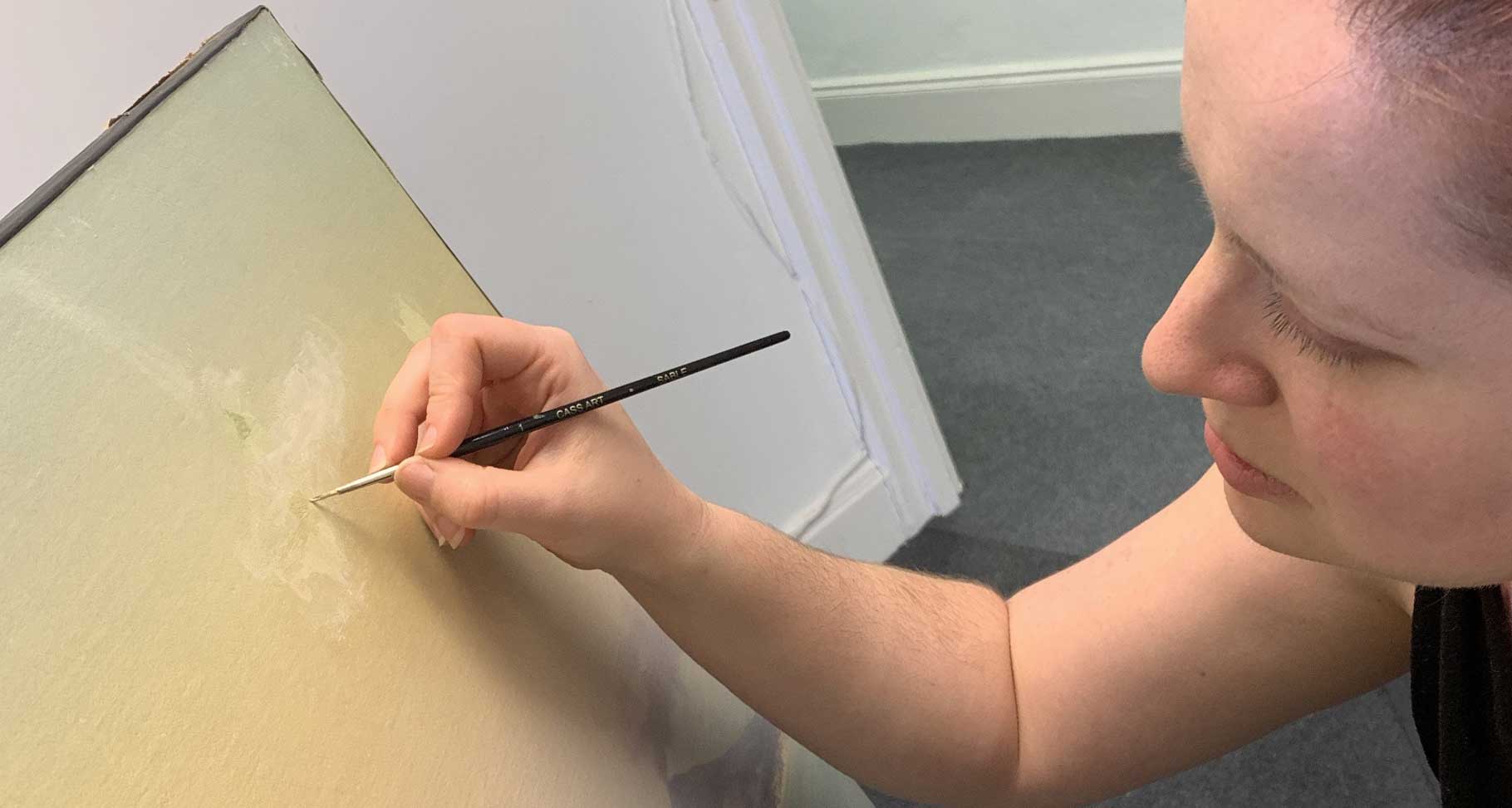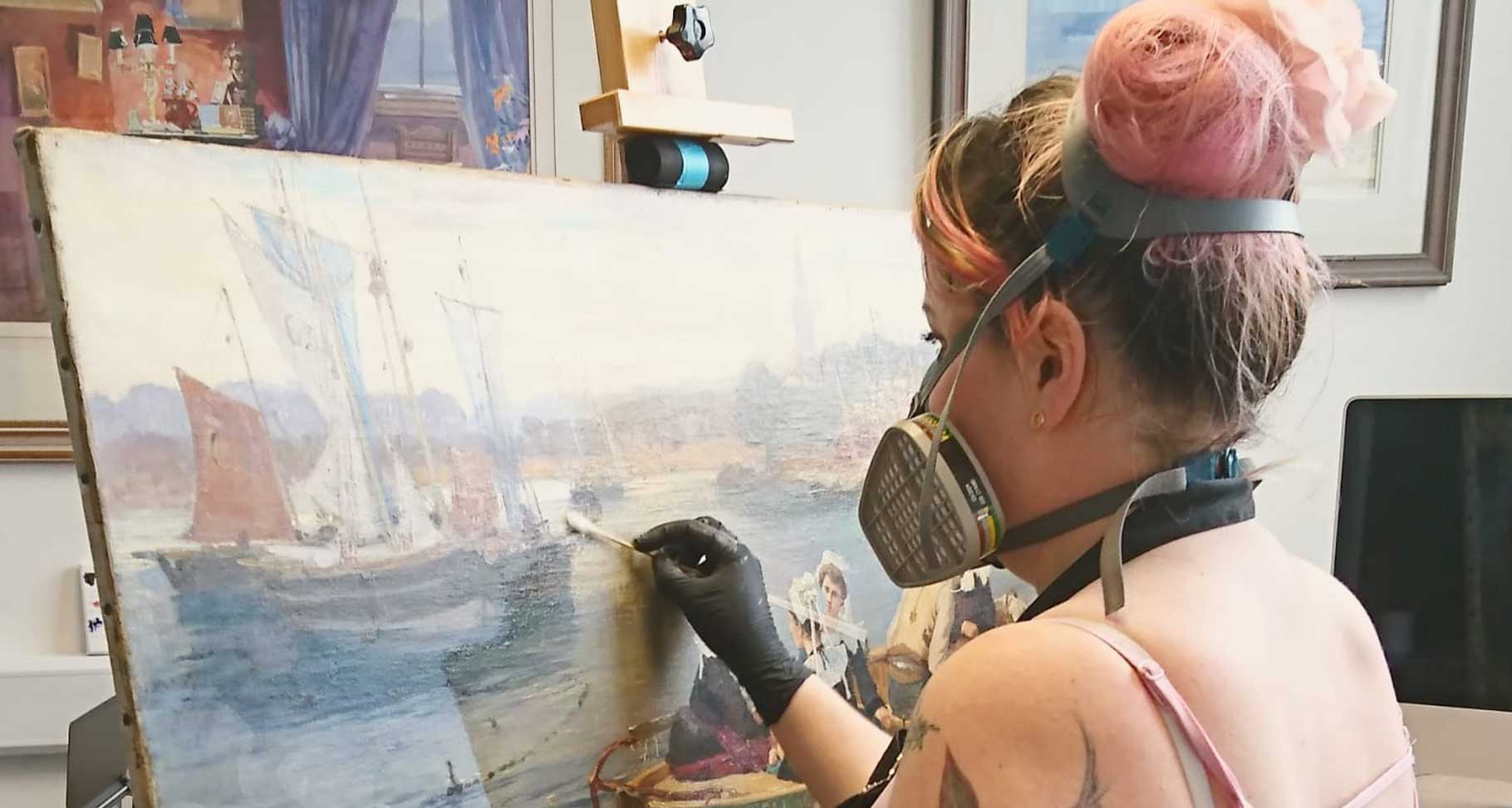
Monica came to Fine Art Restoration Company after completing her master’s degree in Easel Painting Conservation at Northumbria University and is now a central part of our conservation team in Carlisle.
Moving to England from Australia to pursue her studies in conservation and start her career as a conservator, Monica had previously combined the subjects of art history and chemistry during her Bachelor of Arts at The University of Sydney. She chose to add chemistry to her artistic studies after learning about the various areas that exist in the museum sector, which included the complex and scientific role of a conservator.
As a conservator, Monica is able to work with both contemporary and historical paintings. She enjoys learning about the development of artists’ materials throughout history and treating artworks which have been made using unorthodox techniques and materials.
What have been your most interesting discoveries during the restoration process?
I once had a painting that had little makeshift stretcher keys cut from a small antique ruler, I thought those were great. Currently, in the studio, we also have a charming painting by an Ecuadorian artist which has been painted on a tea towel, which is absolutely wonderful. It’s amazing to see the ingenuity and resourcefulness of artists.

Which painting has been the most challenging restoration for you?
I once had an unvarnished painting that had a pastel-coloured sky that had been seamlessly painted in a beautiful rainbow gradient.
It needed some significant retouching because it had unfortunately been damaged and abraded by silver polish. It was a big challenge to get that pastel gradient just right.
I succeeded after many hours and the painting looked great. Plus, my palette was full of beautiful pastel colours!
What is your favourite treatment to perform during the restoration of a painting?
I love to do structural treatments, particularly the process of preparing and adhering strip linings to the tacking margins of paintings, which have lost their strength. Being able to give a painting more structural stability ensures its longevity overall and gives me peace of mind that it will remain tensioned for a longer period of time. Fraying edges, evenly spaced tacks, and folding tight corners on a fresh strip lining is very satisfying and I love how neat and tidy the painting looks afterwards.

What is your favourite type of painting to restore?
I love treating modern and contemporary paintings. I have a soft spot for modern materials such as acrylics, commercial acrylic varnishes, and mixed media, and practices that can sometimes be unorthodox. Modern and contemporary paintings really can make for a fun project. They can also be complex to conserve as some artists’ materials are unpredictable in nature, sensitive, and the true ageing properties may not always be fully known as they have not been widely available or used for a long period of time. Acrylics were only introduced in the 1950s! I worked in an art supplies store for six years while I was living in Sydney and it really encouraged my interest in the continued and rapid development of artists’ materials and how they’re being used.
If you could work on any artwork in the world, what would it be?
A Rothko or Brett Whiteley painting would be a dream! Rothko is one of my favourite artists and it would be an honour (and a challenge!) to work on one of his pieces. Brett Whitely is one of Australia’s most beloved artists and his works depicting Sydney Harbour are, probably for obvious reasons, some of my favourite paintings in the world. His use of ultramarine blue was just spectacular. If you ever get the chance to visit the Art Gallery of New South Wales, Brett Whiteley’s The Balcony 2 (1975) is a must-see.






